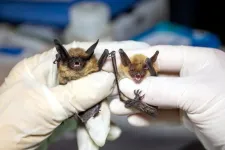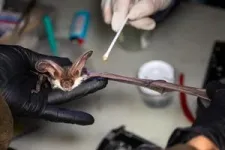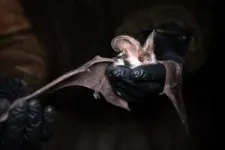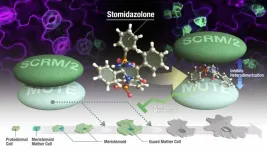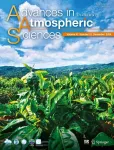(Press-News.org)
Saving the bats: Researchers find bacteria, fungi on bat wings that could help fight deadly white-nose syndrome
Hamilton, ON, Oct. 23, 2024 – Bacteria and fungi from the wings of bats could play a significant role in saving them from white-nose syndrome (WNS), a fungal disease affecting the skin of wings and muzzle, which has nearly wiped out vulnerable bat populations across North America.
Researchers at McMaster University have gathered and analyzed samples from the community of microorganisms, or microbiome, on the wings of several bat species in Lillooett, British Columbia, which they hope will reveal new information about how WNS affects bats and, more important, how to stop it.
Lillooet is of special interest to scientists because its rich and diverse bat population, concentrated in a relatively small geographic area and diverse ecological niches, has shown no signs of infection, even though the disease-causing agent is present elsewhere in B.C. and WNS is widespread in Canada and the US.
“We see a very high number of bat species in the Rockies and west of the Rockies,” explains Jianping Xu, a professor in the Department of Biology at McMaster University and lead author of the paper, newly published in Microbiology Spectrum, a journal of the American Society for Microbiology.
“If there is a new frontier for preserving bat species, it will likely be found in western North America, yet we know very little about the wing microbiome of these bats.”
Healthy wings are critical for the survival and reproduction of bats and the wing microbiome is believed to play a major role in their susceptibility to WNS, say the researchers, who will use the new data to refine a probiotic cocktail they developed in collaboration with scientists at the Wildlife Conservation Society of Canada and Thompson Rivers University.
The cocktail is one of a handful of experimental treatments—including vaccines and fumigation—which are being tested as the scientific community races to treat and prevent WNS. The disease has spread rapidly since it was first detected in New York State in 2006 and has killed millions of bats throughout eastern North America.
White-nose syndrome is caused by Pseudogymnoascus destructans or pd, a fungus that thrives in cold temperatures. It tends to hit smaller species which include the little brown bat, northern long-eared bat and the tricolored bat, all of which have suffered dramatic population declines of as much as 90 per cent in affected areas.
The fuzzy white fungal growth typically appears on the muzzles or wings of infected bats during hibernation, when their metabolic rate and body temperature are low. WNS interrupts hibernation and wakes the bats, causing them to use precious fat reserves, which leads to starvation.
In Lillooet, Xu and his team captured and tested 76 bats and subsequently identified thousands of bacteria and fungi, many of them previously unknown.
They previously isolated over 1000 bacterial strains from bat wings and identified over a dozen strains which appear to fend off the fungus responsible for WNS. Further testing of four strains showed those individual strains of bacteria to be more effective against the fungus when combined.
“To develop a powerful probiotic cocktail that will work and will have an effect against the fungus in nature, we must understand the microbiome of the bats, or what exactly is on their wings,” explains Xu.
Over the last three years the team has administered the cocktail to roosts in British Columbia and in Washington State with promising results.
“This kind of information will allow us to refine potentially region-specific probiotic cocktails and manipulate the microbiome to help the survival of bats,” says Xu.
Attention editors: High-resolution photos and video of the field work are available at this link: https://photos.app.goo.gl/6Wfn6Rd1FpLctVY18
-30-
Media contacts at McMaster University:
Michelle Donovan
Associate Director, Media Relations
donovam@mcmaster.ca
(c) 905-512-8548
Wade Hemsworth
Manager, Media Relations
hemswor@mcmaster.ca
(c) 289-925-8382
Andrea Lawson
Media Relations Coordinator
lawsoa7@mcmaster.ca
(c) 416-899-2017
END
Washington, D.C. – October 23, 2024 – Project Cure CRC, the breakthrough research fund of the leading nonprofit Colorectal Cancer Alliance (Alliance), has announced five new awardees of funds to advance urgent science in the colorectal cancer space. To date, 10 research grants have been awarded for a grand total of almost $5 million in critically needed funding.
Recipients of the most recent grants totaling almost $1 million include investigators from the University of California, San Francisco, Indiana University, University of Saskatchewan, Georgetown University, and Anglia Ruskin University. ...
California’s Channel Islands are home to the Channel Island fox (Urocyon littoralis), one of the smallest and most cherished species of island fox in the United States. Although no longer on the Endangered Species List, they remain a species of special concern due to their ecological importance.
In the 1990s, the San Miguel Island fox nearly went extinct, dropping to just 15 individuals. A recovery program restored their numbers by 2010. However, from 2014 to 2018, the population fell to 30% of its peak right after a new acanthocephalan parasite, commonly known as thorny-headed worms, was identified on the island. This also occurred while a multi-year draught heated San ...
ATLANTA, Oct. 23, 2024 -- Chemical Insights Research Institute (CIRI) of UL Research Institutes has joined with UL Standards and Engagement to release new guidance for communities at risk for fires in wildland-urban interface (WUI) areas. An estimated 70,000 communities and 45 million residential buildings are at risk of destruction caused by wildfires. Additionally, WUI fires pose significant health risks. The smoke emitted by WUI fires likely contains a mixture of contaminants such as combustion gases, organic and inorganic metal complexes, volatile organic compounds and numerous reaction products. WUI wildfire plumes carry the risks of ...
(Boston, MA) — Concussion researchers have recognized a new concussion sign that could identify up to 33% of undiagnosed concussions. After a hit to the head, individuals sometimes quickly shake their head back and forth. Although it has been depicted in movies, television, and even cartoons for decades, this motion has never been studied, named, and does not appear on any medical or sports organization’s list of potential concussion signs. A new study, led by Concussion Legacy Foundation (CLF) CEO and co-founder Chris Nowinski, PhD, says it should.
The study, published today in Diagnostics, reveals that when athletes exhibit this movement, ...
PULLMAN, Wash. – As athletes prepare to dive into Hawaiian waters for the first part of the IRONMAN World Championship on Oct. 26, they may want to pay a little extra attention to the water inside their bodies.
Contrary to previous research, a Washington State University-led study of three decades of the IRONMAN’s top competition found a connection between dehydration and exercise-induced muscle cramps.
Based on medical data of more than 10,500 triathletes, the study, published in the Clinical Journal of Sport Medicine, found a strong link between dehydration and participants seeking treatment for muscle cramps during the competition. ...
Images of coastal houses being carried off into the sea due to eroding coastlines and powerful storm surges are becoming more commonplace as climate change brings a rising sea level coupled with more powerful storms. In the U.S. alone, coastal storms caused $165 billion in losses in 2022.
Now, a study from MIT shows that protecting and enhancing salt marshes in front of protective seawalls can significantly help protect some coastlines, at a cost that makes this approach reasonable to implement.
The new findings are being reported in the journal Communications ...
Researchers from Nagoya University Institute of Transformative Biomolecules (WPI-ITbM) in Japan and their colleagues have identified and derivatized a chemical compound that effectively regulates the density of stomata in model plants. Stomata are crucial for water regulation. As the environment grows increasingly unpredictable, managing water consumption for crops during droughts through chemical methods will become increasingly important. The results of their study were published in Nature Communications.
Manipulating protein interactions using chemical compounds is revolutionizing ...
“While exposure to persecution, war and displacement is associated with high rates of psychological disorders, such as PTSD and depression, remarkably the majority of refugees, despite having gone through very difficult experiences, don’t go on to develop a psychological disorder,” says Prof. Nickerson, Director of the Refugee Trauma and Recovery Program at UNSW’s School of Psychology.
Despite this, previous research has focused on trying to understand factors that predict psychopathology or psychological distress, rather than factors that ...
Tea is a significant global commodity, with an industry worth tens of billions of dollars and growing. However, its production—both in terms of quantity and quality—is highly sensitive to climate variations, particularly in the context of long-term human-induced global warming and its associated shorter-term impacts such as extreme weather events.
To tackle this challenge, a collaborative initiative between UK and Chinese scientists and tea industry stakeholders has been launched. This project, known as “Tea-CUP” ...
Women are more likely to receive good care during pregnancy where AI and other clinical software tools are used, a large review of research has found.
In a paper published in eClinicalMedicine researchers have conducted a review of over 12,000 papers and 87 articles for different AI and related software tools, investigating the impact of their use in maternity settings. A meta-analysis of 35 included studies found the odds of improved outcomes was 1.69 times higher in women cared for using CDSS, with data from over 5.2 million pregnancies in both High-Income and ...
